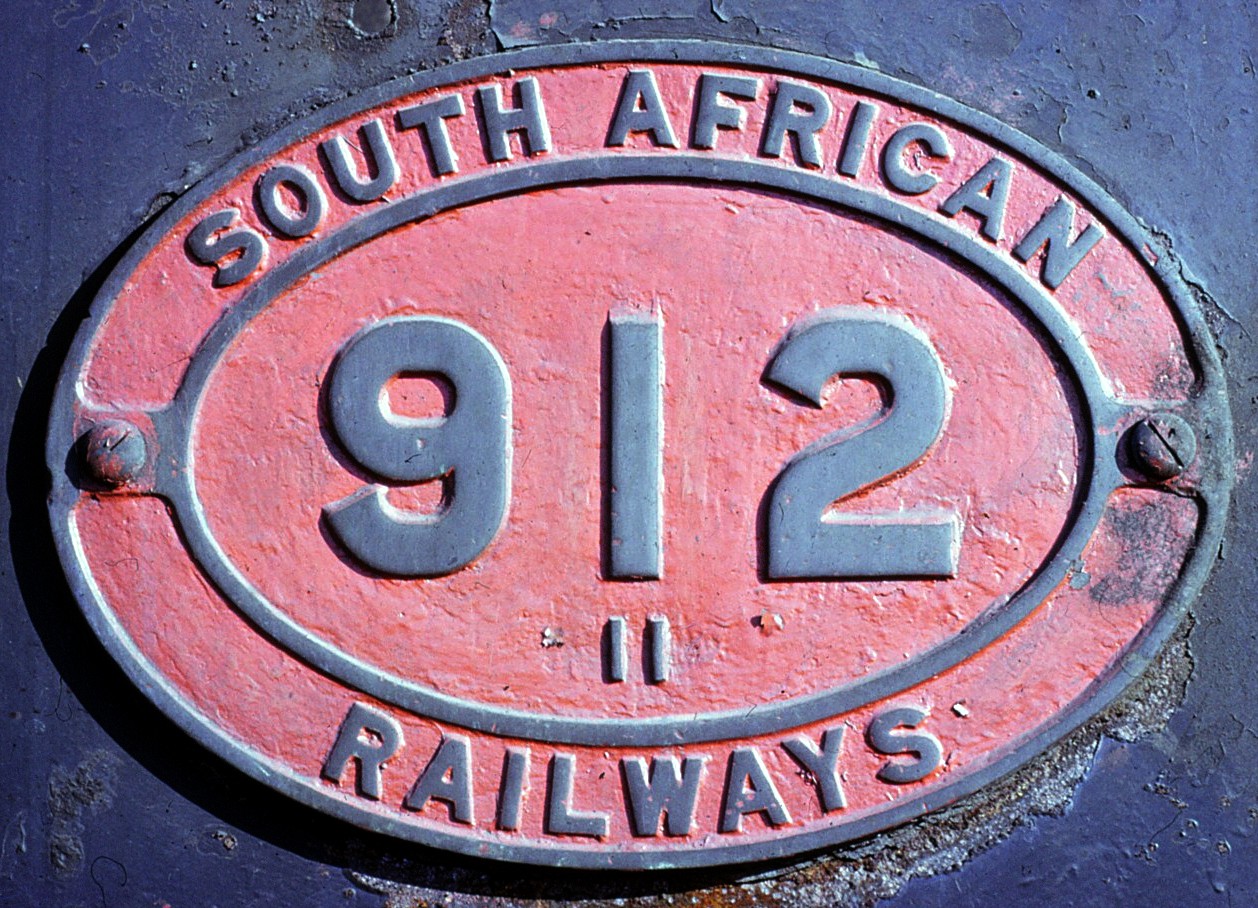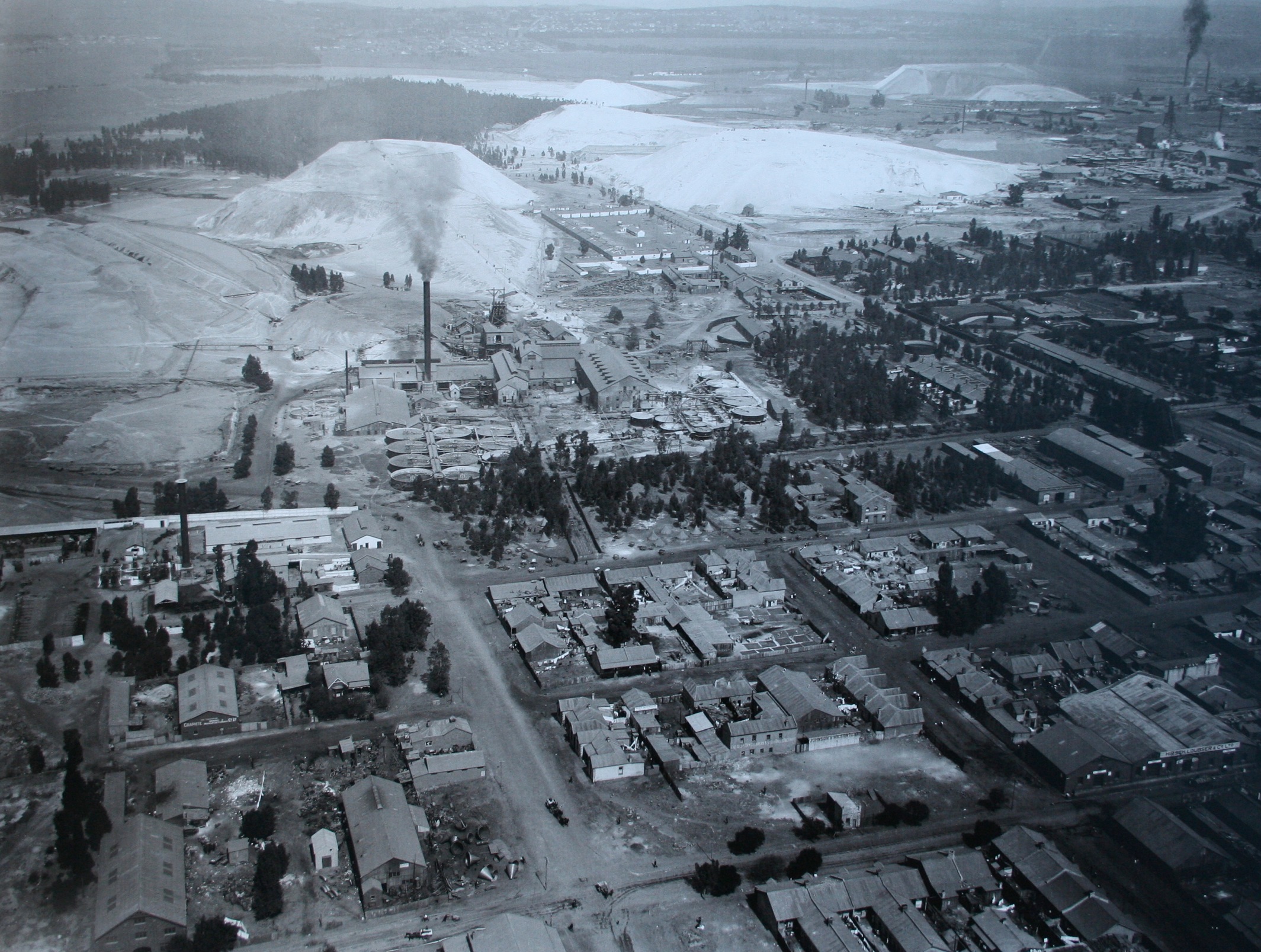|
South African Class 11 2-8-2
The South African Railways Class 11 2-8-2 of 1904 was a steam locomotive from the pre-Union era in Transvaal Colony. In 1904, the Central South African Railways placed 36 Class 11 steam locomotives with a Mikado type wheel arrangement in service. When these locomotives were assimilated into the South African Railways in 1912, they were renumbered but retained their Class 11 classification.Espitalier, T.J.; Day, W.A.J. (1945). ''The Locomotive in South Africa - A Brief History of Railway Development. Chapter VI - Imperial Military Railways and C.S.A.R.'' (Continued). South African Railways and Harbours Magazine, February 1945. pp. 97-99.Classification of S.A.R. Engines with Renumbering Lists, issued by the Chief Mechanical Engineer's Office, Pretoria, January 1912, pp. 9, 12, 15, 36-37 (Reprinted in April 1987 by SATS Museum, R.3125-6/9/11-1000) Manufacturer Built by the North British Locomotive Company (NBL), the Class 11 was designed for goods train service on the Reef by P. ... [...More Info...] [...Related Items...] OR: [Wikipedia] [Google] [Baidu] |
Central South African Railways
The Central South African Railways (CSAR) was from 1902 to 1910 the operator of public railways in the Transvaal Colony and Orange River Colony in what is now South Africa. During the Anglo-Boer War, as British forces moved into the territory of the Orange Free State and the South African Republic, the Orange Free State Government Railways, the Netherlands-South African Railway Company and the Pretoria-Pietersburg Railway were taken over by the Imperial Military Railways under Lieutenant-Colonel Sir Percy Girouard. After the war had ended, the Imperial Military Railways became the Central South African Railways in July 1902, with Thomas Rees Price as general manager. With the creation of the Union of South Africa in 1910, the CSAR was merged with the Cape Government Railways and the Natal Government Railways to form the South African Railways, which is now Transnet Freight Rail Transnet Freight Rail is a South African rail transport company, formerly known as Spoornet. I ... [...More Info...] [...Related Items...] OR: [Wikipedia] [Google] [Baidu] |
South African Type XP1 Tender
The South African type XP1 tender was a steam locomotive tender. The Type XP1 tender first entered service in 1913 as a Type MP1, as tender to a Class MC1 Mallet locomotive. One of the Type MP1 tenders was later modified to suit a Class 10 locomotive and reclassified to Type XP1. It was subsequently attached to a Class 4AR locomotive.South African Railways & Harbours/Suid Afrikaanse Spoorweë en Hawens (15 Aug 1941). ''Locomotive Diagram Book/Lokomotiefdiagramboek, 3'6" Gauge/Spoorwydte''. SAR/SAS Mechanical Department/Werktuigkundige Dept. Drawing Office/Tekenkantoor, Pretoria. p. 44.South African Railways & Harbours/Suid Afrikaanse Spoorweë en Hawens (15 Aug 1941). ''Locomotive Diagram Book/Lokomotiefdiagramboek, 2'0" & 3'6" Gauge/Spoorwydte, Steam Locomotives/Stoomlokomotiewe''. SAR/SAS Mechanical Department/Werktuigkundige Dept. Drawing Office/Tekenkantoor, Pretoria. pp. 6a-7a, 45. Origin The Type XP1 tender was built as a Type MP1 tender by North British Locomotive Co ... [...More Info...] [...Related Items...] OR: [Wikipedia] [Google] [Baidu] |
Germiston
Germiston, also known as kwaDukathole, is a small city in the East Rand region of Gauteng, South Africa, administratively forming part of the City of Ekurhuleni Metropolitan Municipality since the latter's establishment in 2000. It functions as the municipal seat of Ekurhuleni, hosting the municipal council and administration. History Germiston was established in the early days of the Witwatersrand Gold Rush, gold rush when two prospectors, John Jack from the farm of Germiston, Glasgow, Germiston near Glasgow and August Simmer from Vacha, Germany, Vacha in Germany, struck paydirt on the farm of ''Elandsfontein''. In August 1887, the pair were on their way to the Eastern Transvaal when they ''outspanned'' (rested their pack animals) on the farm ''Elandsfontein'' and decided to stay and buy the land. Both men made fortunes and the town sprang up 2 km from the Simmer and Jack mine named after Jack's fathers farm. In 1921, the world's largest gold refinery, the Rand Refine ... [...More Info...] [...Related Items...] OR: [Wikipedia] [Google] [Baidu] |
Witbank
Witbank (), officially Emalahleni, is a city situated on the Highveld of Mpumalanga, South Africa, within the Emalahleni Local Municipality. The name Witbank is Afrikaans for "white ridge", and is named after a white sandstone outcrop where wagon transport drivers rested. The city is known for its coal-mining in the surrounding region. Witbank was renamed to Emalahleni meaning the ''place of coal'' in 2006 by the government of Mpumalanga, matching the municipality. Witbank was founded in 1890 and early attempts to exploit the coal deposits failed until the railway from Pretoria reached the area in 1894. It was proclaimed a town in 1903 and became a municipality in 1914. There are many stories about the city and its origination but the top story would be the arrival of Winston Churchill at the nearby Transvaal and Delagoa Bay Colliery during his escape from Boer imprisonment in Pretoria, on his way to Delagoa Bay (later Lourenço Marques, and then Maputo, in Mozambique). So ... [...More Info...] [...Related Items...] OR: [Wikipedia] [Google] [Baidu] |
Transvaal Colony
The Transvaal Colony () was the name used to refer to the Transvaal region during the period of direct British rule and military occupation between the end of the Second Boer War in 1902 when the South African Republic was dissolved, and the establishment of the Union of South Africa in 1910. The borders of the Transvaal Colony were larger than the defeated South African Republic (which had existed from 1856 to 1902). In 1910 the entire territory became the Transvaal Province of the Union of South Africa. History Both the Boer republics, the South African Republic (ZAR) and the Orange Free State were defeated in the Anglo-Boer War and surrendered to the UK. The peace treaty (Treaty of Vereeniging) contained the following terms: # That all burghers of the ZAR and Orange Free State lay down their arms and accept King Edward VII as their sovereign. # That all burghers outside the borders of the ZAR and Orange Free State, upon declaring their allegiance to the King, be transpo ... [...More Info...] [...Related Items...] OR: [Wikipedia] [Google] [Baidu] |
Union Of South Africa
The Union of South Africa ( nl, Unie van Zuid-Afrika; af, Unie van Suid-Afrika; ) was the historical predecessor to the present-day Republic of South Africa. It came into existence on 31 May 1910 with the unification of the Cape, Natal, Transvaal, and Orange River colonies. It included the territories that were formerly a part of the South African Republic and the Orange Free State. Following World War I, the Union of South Africa was a signatory of the Treaty of Versailles and became one of the founding members of the League of Nations. It was conferred the administration of South West Africa (now known as Namibia) as a League of Nations mandate. It became treated in most respects as another province of the Union, but it never was formally annexed. Like Canada, Australia and New Zealand, the Union of South Africa was a self-governing dominion of the British Empire. Its full sovereignty was confirmed with the Balfour Declaration of 1926 and the Statute of Westminster 1931. ... [...More Info...] [...Related Items...] OR: [Wikipedia] [Google] [Baidu] |
Blue Circle Industries
Blue Circle Industries was a British public company manufacturing cement. It was founded in 1900 as the Associated Portland Cement Manufacturers Ltd through the fusion of 24 cement works, mostly around on the Thames and Medway estuaries, together having around a 70% market share of the British cement market. In 1911, the British Portland Cement Manufacturers Ltd was formed by the addition of a further 35 companies, creating a company with an initial 80% of the British cement market. Subsequently, the company expanded overseas, predominantly into commonwealth countries and South and Central America. The energy crisis of the 1970 caused the contraction of the company, and the sale of its overseas plants. In 1978, the company's name was changed to ''Blue Circle''. In 2001 the company was bought by Lafarge. History The company was founded in 1900 as ''Associated Portland Cement Manufacturers Ltd'' by the amalgamation of 24 cement companies, owning 35 cement plants, all but two ... [...More Info...] [...Related Items...] OR: [Wikipedia] [Google] [Baidu] |
South African Railways
Transnet Freight Rail is a South African rail transport company, formerly known as Spoornet. It was part of the South African Railways and Harbours Administration, a state-controlled organisation that employed hundreds of thousands of people for decades from the first half of the 20th century and was widely referred to by the initials SAR&H (SAS&H in Afrikaans). Customer complaints about serious problems with Transnet Freight Rail's service were reported in 2010. Its head office is in Inyanda House in Parktown, Johannesburg. History Railways were first developed in the area surrounding Cape Town and later in Durban around the 1840s. The first line opened in Durban on 27 June 1850. The initial network was created to serve the agricultural production area between Cape Town and Wellington. The news that there were gold deposits in the Transvaal Republic moved the Cape Colony Government (supported by British Government) to link Kimberley as soon as possible by rail to Cape Town ... [...More Info...] [...Related Items...] OR: [Wikipedia] [Google] [Baidu] |
Janney Coupler
Janney couplers are a semi-automatic form of railway coupling that allow rail cars and locomotives to be securely linked together without rail workers having to get between the vehicles. They are also known as American, AAR, APT, ARA, MCB, knuckle, Buckeye, tightlock (in the UK), Henricot (in Belgium) or Centre Buffer Couplers. Background Janney couplers were first patented in 1873 by Eli H. Janney (). Andrew Jackson Beard was amongst various inventors that made a multitude of improvements to the knuckle coupler; Beard's patents were granted 23 November 1897, which then sold for approximately $50,000, and granted 16 May 1899. In the UK, several versions of Janney couplers are fitted to a limited number of coaches, multiple units, wagons and locomotives. Janney Type E, Type F Interlock, and Type H tightlock couplings are compatible subtypes, each intended for specific rail car types. Prior to the formation of the Association of American Railroads (AAR) these were known as ... [...More Info...] [...Related Items...] OR: [Wikipedia] [Google] [Baidu] |
Railway Coupling
A coupling (or a coupler) is a mechanism typically placed at each end of a railway vehicle that connects them together to form a train. A variety of coupler types have been developed over the course of railway history. Key issues in their design include strength, reliability, ease of making connections and operator safety. The equipment that connects the couplings to the vehicles is the draft gear or draw gear and these must absorb the stresses of coupling and train acceleration. Nomenclature Compatible and similar couplings or couplers are frequently referred to using widely differing make, brand, or regional names, or nicknames, which can make describing standard or typical designs confusing. Dimensions and ratings noted in these articles are usually of nominal or typical components and systems, though standards and practices also vary widely with railway, region, and era. Buffers and chain The basic type of coupling on railways following the British tradition is the bu ... [...More Info...] [...Related Items...] OR: [Wikipedia] [Google] [Baidu] |
Piston Valve (steam Engine)
Piston valves are one form of valve used to control the flow of steam within a steam engine or locomotive. They control the admission of steam into the cylinders and its subsequent exhausting, enabling a locomotive to move under its own power. The valve consists of two piston heads on a common spindle moving inside a steam chest, which is essentially a mini-cylinder located either above or below the main cylinders of the locomotive. Overview In the 19th century, steam locomotives used slide valves to control the flow of steam into and out of the cylinders. In the 20th century, slide valves were gradually superseded by piston valves, particularly in engines using superheated steam. There were two reasons for this: * It is difficult to lubricate slide valves adequately in the presence of superheated steam * With piston valves, the steam passages can be made shorter. This, particularly following the work of André Chapelon, reduces resistance to the flow of steam and improves eff ... [...More Info...] [...Related Items...] OR: [Wikipedia] [Google] [Baidu] |
Walschaerts Valve Gear
The Walschaerts valve gear is a type of valve gear used to regulate the flow of steam to the pistons in steam locomotives, invented by Belgium, Belgian railway mechanical engineering, engineer Egide Walschaerts in 1844. The gear is sometimes named without the final "s", since it was incorrectly patented under that name. It was extensively used in steam locomotives from the late 19th century until the end of the steam era. History The Walschaerts valve gear was slow to gain popularity. The Stephenson valve gear remained the most commonly used valve gear on 19th-century locomotives. However, the Walschaerts valve gear had the advantage that it could be mounted entirely on the outside of the locomotives, leaving the space between the locomotive frame, frames clear and allowing easy access for service and adjustment, which resulted in it being adopted in some articulated locomotives. The first locomotive fitted with the Walschaerts valve gear was built at the Belgian Tubize worksh ... [...More Info...] [...Related Items...] OR: [Wikipedia] [Google] [Baidu] |





.jpg)
